A couple days ago I was contacted by my good friend Bryan Trapper Voldahl. Trapper said he was going with the Westby Rod & Gun Club staff to stock some brook trout. Trapper invited me to go along. I jumped at the opportunity. Trapper told me that there are many such organizations in the area. Some raise trout and pheasants yearly. ALL of them are run by volunteers and they are private clubs.
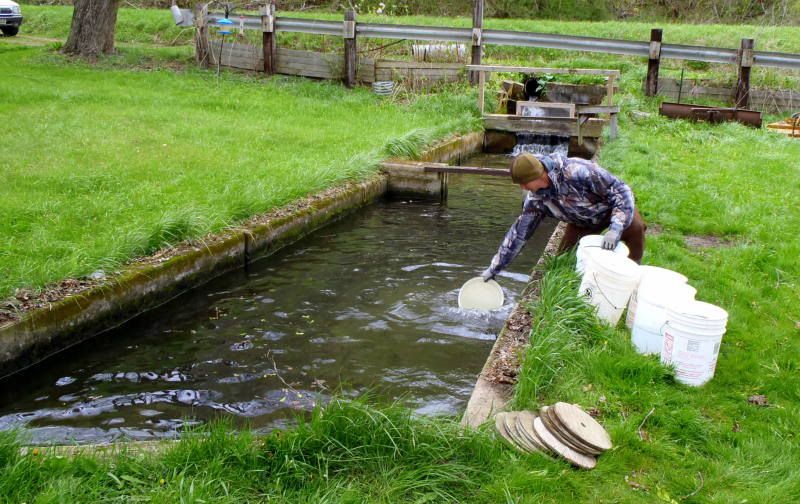
I showed up at the designated area this morning in rural Vernon County. I like to keep the locations of the rearing ponds under my hat to safe guard the trout. I was greeted by WDNR staff member Dave Schmidt. Not everyone was there yet so I asked Dave some questions about the stocking programs. The WDNR gives trout to these clubs as fingerlings. The clubs are responsible for rearing of the trout. The place they are reared in are inspected and and the WDNR must approve the site prior to raising trout. Each raceway or rearing area is inspected yearly by the WDNR before and after the trout are raised. Seven random trout are taken from each site part way through the year and inspected for diseases or parasites.
The trout are typically stocked in streams this time of the year. There are a couple reasons why the trout get stocked in the waterways now. Typically most rearing ponds are at the headwater of a waterway. Usually right at a spring head. That water is a constant temperature right around 46 degrees year round and the water is moving quite fast and this aerates the water. Aerates is a fancy term for puts lots of oxygen in the water. That many trout in one area requires some serious oxygen content. The WDNR truck is there and it has water in it and it is controlled temperature and aeration. This temperature is kept near to the temperature of the raceway water. The trout would go in to shock if there was too much of a temperature difference from the raceway to the truck. Temperature is the key.
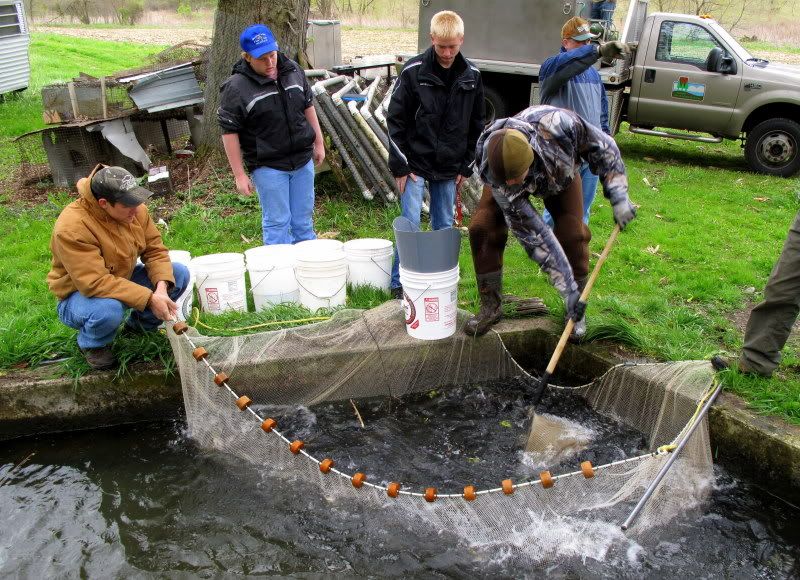
Dave Schmidt was taking temperatures constantly and running the show very efficiently. Trapper was the lead guy to determine where the trout were to be stocked. Dave oked each area as we got there after he took the stream temperatures where we were to put them in. The most significant reason for stocking the trout this time of the year is temperatures of the rearing ponds versus the streams. There can not be a big temperature difference from raceway to truck and to stream. The trout will go in to shock and die.
Steve Campton from the Westby Rod & Gun was the middle man between the WDNR and the locals. Steve has been doing this for 7 years he said. The rearing pond that we got the trout from has be doing this for over 50 years and all people involved are volunteers. I watched the volunteers doing the bucket brigade from the raceway to the truck and from the stocking truck to the streams. Each bucket holds about 70 brook trout in each. The total amount of trout from this rearing station being released today is 3,500 year old brook trout.
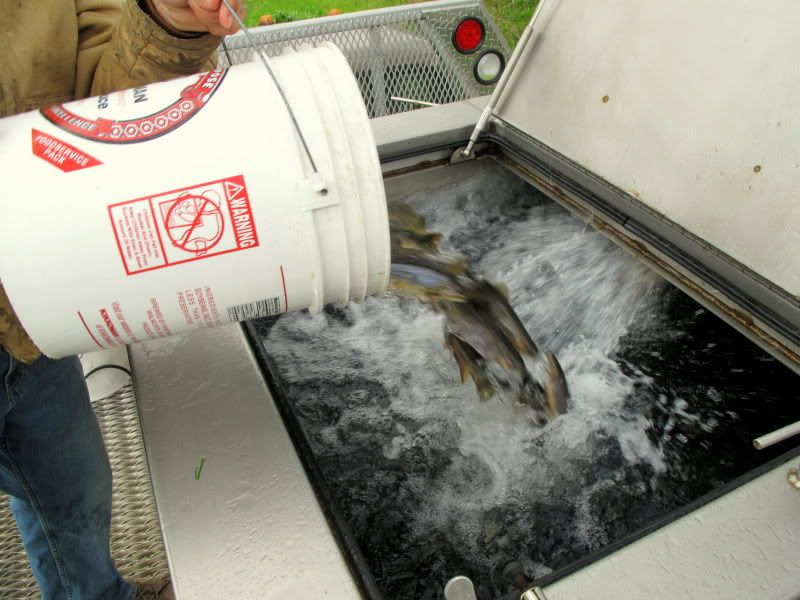
Steve told me that he likes to get at water level to disperse the brookies. It is much better on them to enter the water at low altitude. Steve told me that some times they empty the buckets directly off bridges up to 10 feet high. Steve told me that trout are much more resilient then folks lead you to believe. They are not injured by emptying the buckets off of bridges. Steve smirked and said: “They are not made of glass like lots of folks want you to believe.” At each site before we released them Dave was doing his due diligence and measuring the stream temperatures to make sure no shock would result in the trout upon release. He wanted that stream to be a close temperature to the water in the truck. This is the real reason for release this time of the year.
There were four high school students from Westby High School doing all the grunt work. The young men loaded the WDNR truck with the buckets full of trout and they walked them down to the streams and actually released them. The young men who were doing all the work were Jacob Leum, Dylan Thurk, Kent Hamilton, and Josh Hass. Many other volunteers helped feed the trout through the year. The trout are typical fed 6 times a week. They are fed special trout pellets that are bought by each individual club. The one year old brook trout stocked typically vary in sizes from 6 to 11 inches.
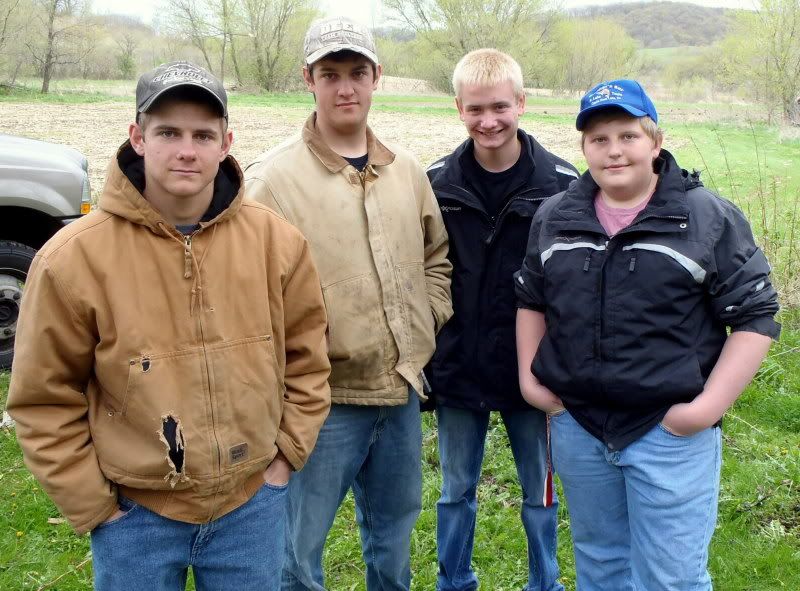
Most trout rearing places are cement raceways. There are a few that are designed differently. The Gays Mills Wildlife Club has two very large milk vats that they bought from a local creamery. All are typically located at the heads of streams where a big spring flows in. These locals are giving their own time to make our streams a better place to fish and deserve a big THANK YOU from all of us. Thank you Lloyd for allowing the Rod & Gun to raise trout on your land. Thank You Westby Rod & Gun and thanks Bryan Voldahl and the young men doing the bucket brigade. Thank you to all you locals throughout Wisconsin helping us to make our state so great. Kent and I talked and we are going to go fishing soon. Kent told me he knows where a big brookie lives. The parents of these young men helping obviously raised their sons right.
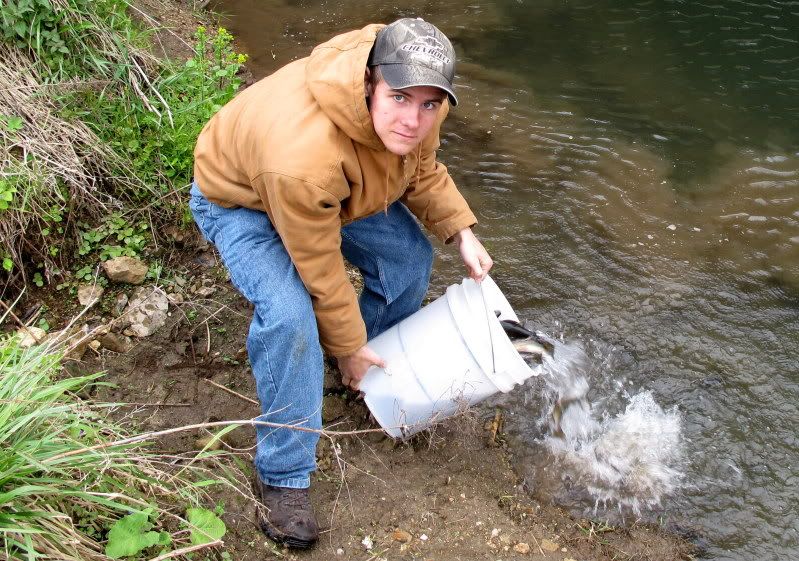
 …RR
…RR